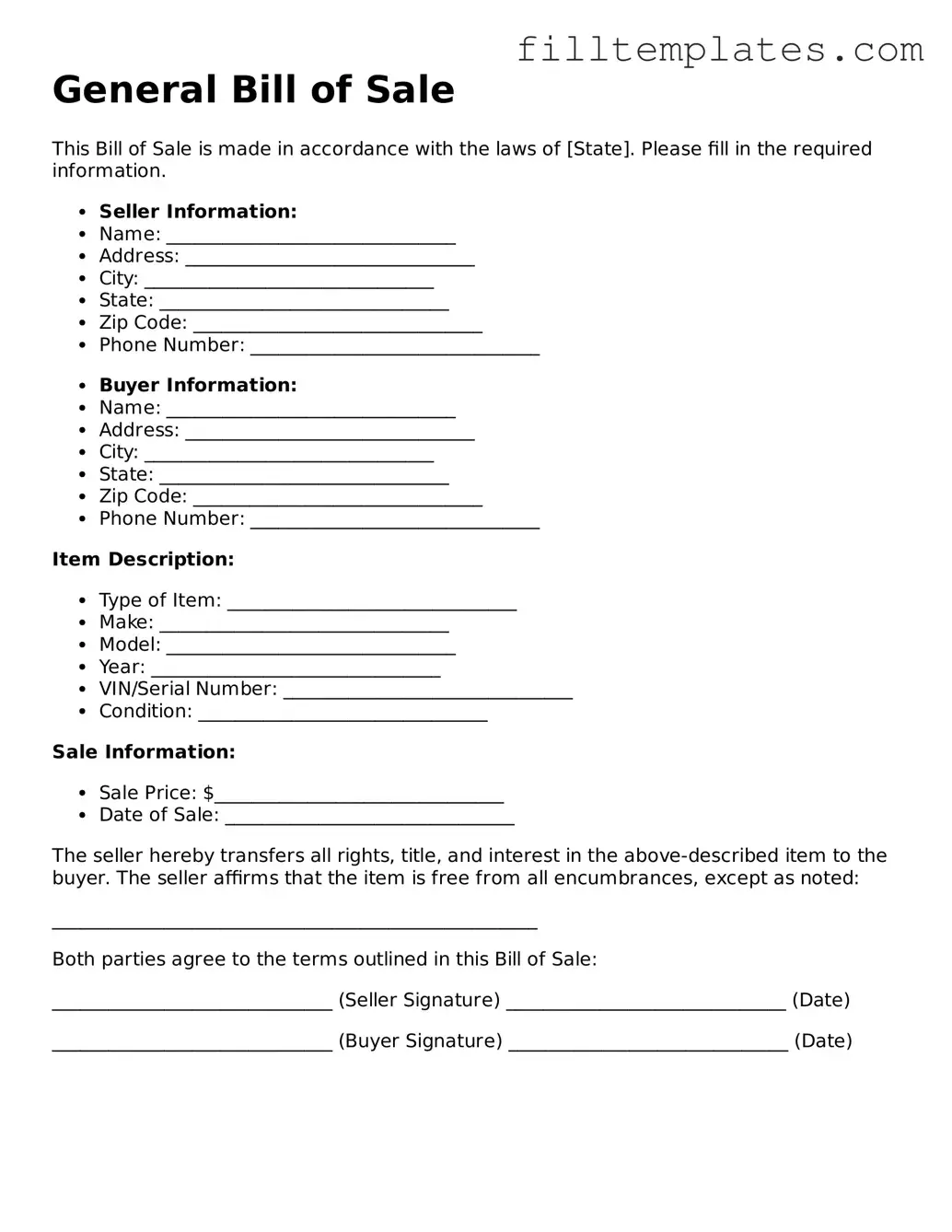General Bill of Sale
This Bill of Sale is made in accordance with the laws of [State]. Please fill in the required information.
- Seller Information:
- Name: _______________________________
- Address: _______________________________
- City: _______________________________
- State: _______________________________
- Zip Code: _______________________________
- Phone Number: _______________________________
- Buyer Information:
- Name: _______________________________
- Address: _______________________________
- City: _______________________________
- State: _______________________________
- Zip Code: _______________________________
- Phone Number: _______________________________
Item Description:
- Type of Item: _______________________________
- Make: _______________________________
- Model: _______________________________
- Year: _______________________________
- VIN/Serial Number: _______________________________
- Condition: _______________________________
Sale Information:
- Sale Price: $_______________________________
- Date of Sale: _______________________________
The seller hereby transfers all rights, title, and interest in the above-described item to the buyer. The seller affirms that the item is free from all encumbrances, except as noted:
____________________________________________________
Both parties agree to the terms outlined in this Bill of Sale:
______________________________ (Seller Signature) ______________________________ (Date)
______________________________ (Buyer Signature) ______________________________ (Date)
